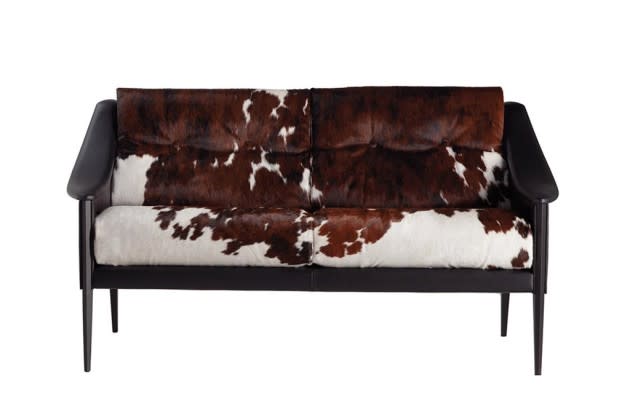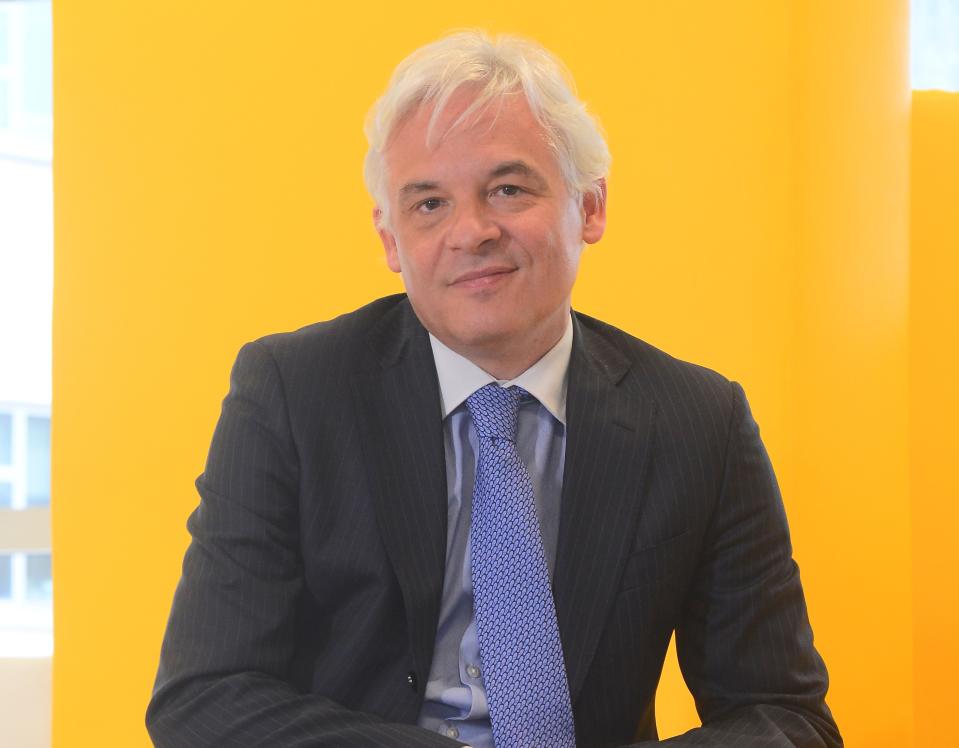Italian Design Prepares for E-commerce

MILAN — In an age of booming tariffs and rising transport costs, what is the easiest way to ship a 350-pound couch from Italy to China?
As Design Week approaches here, the focus has turned to such questions, and the potential of digital e-commerce channels. Digital penetration in the design sector is growing but trailing far behind the zenith its fashion sector counterparts achieved well over a decade ago.
“The big challenge is that the majority of our brands offer a customized service and one model might have 2,000 configuration possibilities,” said Giorgio Gobbi, managing director of Italian Design Brands, speaking to WWD on the sidelines of a conference at the Milan Stock Exchange.
More from WWD
“If it [a couch] arrives in Kuala Lumpur and can’t fit in the elevator of a skyscraper, it’s useless,” he stated. Today, IDB generates just 7 percent of its retail revenues from online sales via third-party e-commerce shops with which it has partnerships, Gobbi explained.
In total, IDB’s portfolio includes 10 companies and 13 brands including upscale furniture brands Saba Italia, Gervasoni, and Meridiani; lighting companies Davide Groppi, Axolight and Flexalighting in North America, as well as luxury contract companies like Modar and Cenacchi International, which makes installation of luxury furnishings for stores, showrooms, offices, hotels and prestigious homes anywhere in the world. In terms of markets, IDB generates 25 percent of its sales from Italy, 33 percent from the rest of Europe, 25 percent from the U.S. and 5 percent from China.
“We have a back-end, info commerce already in place that supports the customer journey. We have already made an investment in online and we will make further investments when we feel it’s worth it,” Gobbi said, noting that the priority is on forging personal relationships and ensuring top-level service.
Claudia D’Arpizio, a Bain & Co. partner and Global Consumer Products and Retail lead, said sales generated from digital channels are expected to represent 10 percent of the market by 2027, outperforming at almost “double speed,” versus all other channels. In key markets like the U.S., for example, premium brands dominate, though awareness regarding high-end brands represents both a hurdle and growth potential.
E-commerce growth in North America depends on how effective Italian brands are in their storytelling and engagement efforts. In this vein, lead-to-store offers that allow consumers the freedom to explore independently and initiate a first draft of design before being re-sent to the selected dealer or physical store to conclude the purchase are prevalent, D’Arpizio explained.
“Digital channels are increasing their importance (and the pandemic has accelerated this trend), especially in terms of the ability of autonomous information and navigation of the product offer, opening up omnichannel offers,” she pointed out, explaining that this combination of physical need for interaction and increasing “online” exploration has catalyzed high-end furniture brands to increase their outreach favoring the opening of smaller spaces oriented more toward the conclusion of the transaction than the display of the offer.
Design Italy is one company trailblazing progress. Founded in 2019, the company represents 140 brands in shipping their goods to more than 100 countries. The Milan-based firm said online demand is growing by double digits every year, booking 20 percent of its sales from home décor, accessories and lighting, which is easier to ship to its clients all over the globe.
Its founder and chief executive officer Roberto Ferrari is known for his experience in leading Italian companies into the digital space through his work as an investor, consultant and chief digital and innovation officer of merchant bank Mediobanca. Cassina, which is owned by Poltrona Frau, is the latest vanguard label to be added to his roster, appointing Design Italy as its official partner.
The real caveat, Ferrari explained, is overcoming logistical and dimensional issues. Shipping a lamp is one thing, shipping a sectional couch is another. Brands are hard-pressed to overcome the challenge of intercontinental shipping, as the industry is only accustomed to large transport versus single-purchase operations.
“We are working very hard with one shipping partner to make this happen and get better/cheaper quotations to include more reliable and better service to the customers at the intercontinental level,” Ferrari said, adding that North America is the most important region for Design Italy, posting robust growth accounting for 40 percent of its gross sales.

Elsewhere, the pandemic has undoubtedly accelerated e-commerce for major conglomerates like Design Holding, which comprises leading brands B&B Italia, Flos, Menu, By Lassen, Lumens, Louis Poulsen, Arclinea, Maxalto, Azucena and produces Fendi Casa through a joint venture with the Roman fashion house. The Italy-based firm invested heavily in the development of e-commerce platforms for its brands, reporting double-digit growth across this channel, rising 39.3 percent in 2022, versus 2021, including a strong contribution from Lumens, its U.S.-based leading online retailer of high-end lighting and home furnishings.
Going forward, the Design Holding’s CEO Daniel Lalonde said the focus is largely based on enhancing desirability of its brands through its e-commerce websites, expanding with a focus on North America, China and the Middle East. In China, for example, Design Holding hopes to welcome a new demographic of luxury conscious millennial shoppers. Design Holding directly operates its e-commerce sales across all brands but only in North America and Europe. Its e-commerce business is expected to rise in the double digits, Lalonde said, noting that currently lighting and accessories remain the main catalyst for e-commerce sales.
Industry leaders here agree that communicating the value of Italian design brands remains an uphill climb, but that promoting this allure is crucial in expanding its e-commerce business, as companies like Design Italy look to expand into other bespoke services in the arenas of interior design and architectural consultation.
Best of WWD

 Yahoo Finance
Yahoo Finance 